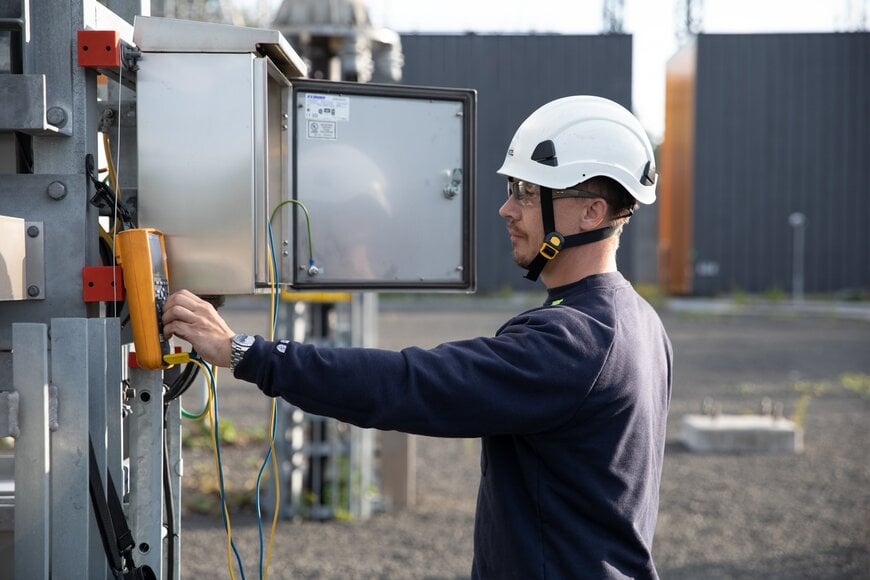Faster Grid Access: How Vattenfall Speeds Up UK Connections
Collaborative project delivery helps cut delays and energize sites faster amid UK grid reforms.
group.vattenfall.com

Delays to grid connections remain one of the most pressing obstacles in the UK’s drive to decarbonise. Across the country, “shovel-ready” projects are stuck in the queue — a frustrating contradiction for a nation aiming to triple solar and wind capacity by 2030. While government and Ofgem are reforming the process — particularly for generation and storage — policy change alone won’t solve the problem. What’s needed is a shift in delivery mindset. A recent project in Corby offers a glimpse of what’s possible when developers, Independent Connection Providers and Independent Distribution Network Operators work in sync from day one.
A real-world solution in Corby
When logistics firm Arvato took over a 31,000m² warehouse and 6,000m² of office space in Corby, the site required a major upgrade to its power supply — specifically 1300 kVA at 11 kV — to support advanced logistics operations.
To deliver the grid connection, Arvato’s chosen Independent Connection Provider, SmOp Cleantech, partnered with Vattenfall IDNO. The result was a tightly coordinated process, avoiding the bottlenecks that often slow projects down — and getting power flowing faster.
From the outset, the two teams worked as an integrated unit. Vattenfall’s Business Development Manager, Bilgin Oralerkaya, collaborated closely with Commercial Energy Advisor Kelly Alexiou and Analyst Gareth Hui to calculate the all-important Asset Adoption Value (AAV). Together, they modelled costs, reviewed technical inputs with the Operations team, and developed an initial offer — which SmOp refined and signed off. With the AAV agreed, the project was officially in motion.
Clearing legal hurdles early
Grid connections often stall at the legal stage, particularly when negotiating substation leases or access to land. In Corby, the legal process was kept on track through a solutions-focused, proactive approach.
Land Consents Manager at Vattenfall IDNO, Louise Mortell, worked directly with SmOp to resolve issues early and maintain close communication with the landowner’s solicitor.
“By working directly with SmOp to explain the legal challenges, we were able to reach an agreement with the landowner in record time,” Louise said. “That level of cooperation really speeds things up. It’s a crucial reminder: legal sign-off shouldn’t be treated as a separate phase — it needs to be part of delivery planning from the outset.”
Building right — and building fast
On site, Vattenfall Project Manager Cameron Roscoe oversaw construction and compliance, ensuring all works met safety, quality and resilience standards. He also completed due diligence checks on behalf of the IDNO to safeguard long-term network performance.
Meanwhile, the commercial team stayed actively involved: registering MPANs, verifying tariffs, and confirming that the as-built network matched the original model. When works were complete, Cameron coordinated with the DNO to set the energisation date — and power began flowing to Arvato’s site without disruption.
Why this approach matters now
In January 2025, the government’s Clean Power 2030 Action Plan introduced a significant shift for generation projects — replacing the old “first come, first served” model with a “ready first, connected first” approach. The aim is to clear speculative schemes from the queue and prioritise those with planning permission, technical designs, and land rights in place.
While these changes are focused on generation and storage, the broader shift toward “readiness” and early coordination applies equally to demand-side projects — particularly those with large or flexible loads that could affect local network capacity.
As Bilgin Oralerkaya puts it: “Projects that consider grid adoption from the outset and pick an experienced IDNO that has strong relationships with a range of ICPs they are used to working with, are far more likely to avoid delays and complications.”
Lessons for developers, councils and investors
The Corby project offers a practical blueprint for faster, smoother connections. The key is early collaboration — legal, commercial, engineering and planning teams from the IDNO and ICP working as one from day one.
It’s also vital to understand what “ready” means in this evolving landscape. Even for demand-side schemes not formally subject to new rules, a high level of preparation — including land rights, technical documentation and delivery partners — can make the difference between progress and being left behind.
An IDNO is not just a network adopter — it’s a funder and delivery partner. With the right team in place, developers can simplify the grid connection process, mitigate risk, and stay focused on what matters: delivering their project on time.
A more connected — and smarter future
The Corby project shows what’s possible when the right pieces are in place. With early coordination, trusted delivery partners and a shared commitment to speed and quality, even complex grid connections can be delivered without the usual headaches. As the UK pushes toward net zero, this kind of joined-up approach will be essential — not just for energy projects, but for housing, logistics, and infrastructure at every scale. The future is not only electric — it’s collaborative.
www.vattenfall.com

